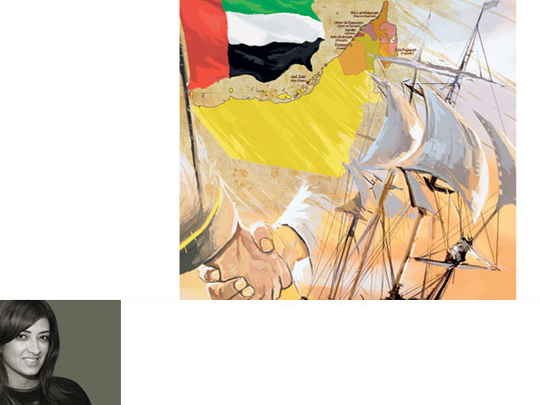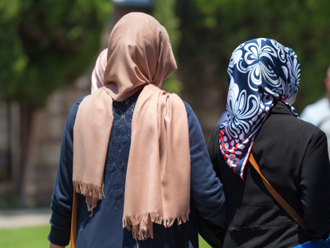
As we all know, certain points on a map become sacred because of their history — but articulating the details of that history is not always easy. As we celebrate the UAE Federation’s 40th anniversary, the country’s history is incredibly central to my thoughts and reflection. For one, over time it has been called the Pirate Coast and then the Trucial Coast which ultimately led to the UAE Federation.
In 1602, the Dutch and English gained commercial strength in the East under the Dutch VOC and the English East India Company, both joint stock companies owned by private merchants. This influenced much of the history of the Arabian Gulf. At the time, Amsterdam had developed into the leading financial and commercial city in Northern Europe. The existence of a vast integrated network of trade in the Indian Ocean stretched from the Red Sea and the Gulf to South of China, Amsterdam and London. The Dutch had gained extensive information on where the Portuguese had failed before them in the Gulf in terms of trade. The objective of the VOC was to obtain a monopoly of the lucrative Spice Islands and in 1619 they achieved this goal by having a stronghold in Batavia, Jakarta. This helped them establish trading ventures all over Asia allowing them to sell commodities from India, Indonesia and the Far East to Arabia, helping them monopolise the Indian Ocean trade routes. In 1622 the Dutch and English entered, through the Strait of Hormuz (known for its large number of pelagic fish such as tuna, mackerel and sardines), to the Gulf markets where they concentrated their trade with Basra and Bandar Abbas, the latter becoming a centre for trade and political activities in the Gulf for the next 150 years.
In 1652, competition intensified between the two powers and the English lost their Arabian Gulf factories at Bandar Abbas and Basra to the Dutch. The VOC became the chief supplier of spices in Persia and the Arabian Gulf by 1680.
By the mid 18th century the Dutch power weakened as a three-way warfare erupted between them, the English and French. In order to preserve their position in the Arabian Gulf they occupied the island of Kharg, which was offered them by the Arab ruler of the Za’ab tribe. Erecting both a fortress and factory strengthened their position and they took over many economic activities of the indigenous Arab population including pearling. In 1766 under the leadership of Mir Muhanna, the island of Kharg was freed from the Dutch. This was a historic moment as it ended the VOC presence in the Arabian Gulf.
With the decline of the Dutch, British fortunes increased in the region marking the beginning of the British Political Residency in the Gulf, whose primary functions were entirely political. At this same time in the 18th century three political entities emerged in southeastern Arabia — the Qawasim with their main base at Ras Al Khaimah, the Bani Yas federations and the Al Bu Said dynasty with Muscat as its capital. The region was known to the British as the ‘Pirate Coast’ as raiders based there harassed the shipping industry despite both European and Omani navies patrolling the area. There were disturbances between the Qawasim and the British and in 1820 the British concluded the General Treaty of Peace with the Shaikhs of the Arab Coast by which the Rulers agreed to putting an end to any disturbances at sea— this meant that they were not allowed to build large ships and erect fortifications along the coast. With this agreement also came the denunciation of the slave trade (that were mainly brought as domestic servants). This essentially gave the British the right to police the seas of the lower Gulf and was a crucial point in their ‘formal’ interest in the area.
Many other agreements were signed after these series of events — an important one being the Ten Years Truce, which was a document that established permanent peace at sea and in 1853 The Perpetual Treaty of Maritime Peace. The area became known in political documents as the Trucial Coast as a result of this truce. This later led to The Exclusive Agreements of 1892 which ensured that the Trucial Shaikhs not enter into any agreement with any power other than the British Government, in return for defending the emirates from foreign aggression.
Between both World Wars, the British got more involved with the Trucial States with the ‘British Imperial Airways’ securing landing rights in Sharjah in 1932 and the introduction of a Political Agency, which was later, transferred to Dubai in 1953. The signing of the oil concessions was ultimately the biggest involvement on their side and this led to the demarcating of boundaries in the 1950s.
As oil was discovered and produced in Abu Dhabi in 1962 and later in Dubai and Sharjah the region gained momentum in world economic and political affairs. This led to the development of a desired unification among the emirates. In 1968 the British finally announced their intention to withdraw from the Gulf by 1971.
On the 18th of February 1968, Shaikh Zayed Bin Sultan Al Nahyan, Ruler of Abu Dhabi, and Shaikh Rashid Bin Saeed Al Maktoum, met at Al Semha and agreed to merge their respective emirates in a union and jointly conduct foreign affairs, defence, social services, security and adopt a common immigration policy. This momentous agreement came to be known as the Union Accord and considered as the first step towards uniting the Trucial Coast as a whole. The foundation of an independent, sovereign state was formally proclaimed on December 2, 1971, and after Ras Al Khaimah joined on February 10, 1972, the federation was complete, with the inclusion of all the seven former Trucial states. This newly-founded federal state became officially known as Dawlat al Imarat al Arabiyya Al Muttahida or the United Arab Emirates (UAE).
As I watch the small abra boats cross the Dubai creek, I imagine the incredible series of tumultuous events that make up the history of my now peaceful home, the UAE.
Muna Al Gurg is a director at the Easa Saleh Al Gurg Group and chairwoman of the Young Arab Leaders. You can follow her at www.twitter.com/MunaAlGurg









